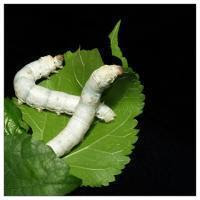几经而不得入,最近终于提前订票专门参拜了滨州匹茨堡郊外著名的“流水山庄”,总算可以给这篇起草于十几年前的杂文划个句号了。
三十多年前在北京,先生的单位给他们几个刚分配来的大学生分了一套单元房,两人住大间,十五平米左右,另两人一人住一小间,每间约七平米。先生分到夹在中间的那间小屋。我平时住研究生宿舍,周末会去他那间小屋挤一挤。单人床靠墙边加一条一尺宽的木板,一个小桌子上用砖头和木板搭成一个三层的书架,一把椅子,装杂物的箱子塞在床底下,就是我们的小家。屋子小到有时坐在床边穿鞋,一弯腰,头就会碰到对面的墙上。尽管如此,我们倒也自得其乐,动不动还要“斯是陋室,惟吾德馨”云云。好像要在这样的小屋里成就一番大事业的样子。
没有条件时自然谈不到住房的建筑样式。即便是我们艺术研究院的宿舍,也都是简易房,恨不得就用水泥块三合板搭建起来,亏得还是在大名鼎鼎的恭王府“大观园”里,不但没有为其填色,反而破坏了原来的韵律和美感。幸而后院的红楼,也就是相传王熙凤的九十九间半库房,青砖绿瓦,雕梁画栋,红门红窗红柱廊,还保留了一些中国古典建筑特点。后来我居然也还在其中的一间屋子上班,感觉还真是不一样(后注:不过也就是在大观园里给凤姐打打小工的味道)。
记得当时萧默老师给我们讲过几堂建筑美学课,又带我们去全国各地佛窟寺院陵园考察,一路大侃特侃中国建筑和园林设计的美学特点;比如土木砖瓦材料的温柔敦厚及其所反映的中国人崇尚自然的审美观;又比如历代皇城的设计注重平行方向展开而不向垂直方向发展,也是意在亲近大地、天人合一;又讲颐和园入口处的影壁(屏风墙)所起的视觉心理上的欲扬先抑的作用,等等;当然也忘不了比较我们研究院所在的恭王府这一类北方王府的恢弘大气和江南园林的精致小巧。不过,他讲来讲去、我们看来看去的,全都是些宫廷建筑、皇家园林之类,跟现实生活中水泥建造的筒子楼、砖坯小平房完全搭不上关系,反倒把我们听成了一群不食人间烟火的家伙。那会儿,谁都不会把高雅抽象的建筑艺术同自己的住房联系在一起。尽管偶尔也会讨论北京四合院格局的人性化特征和亲和力,不过更多是着重于它的社会学效应,而非设计艺术形式上的特征。
后来怀揣国家允许兑换的50美元来到美国,靠一点奖学金和周末打工过穷学生的日子,有个窝住就很满足了,何况不管什么样的猪窝狗窝的都有带淋浴的卫生间,比那五、六个人共用一个蹲坑没有洗澡间的的单元房不知好了多少倍,所以仍然想不到自己的小窝跟建筑艺术能有什么瓜葛。也许这注定是中国老百姓对住房或“家”的认识吧:屋顶下面圈只猪 – 足矣。引起注意的倒是这个国度里大多数人家都有自己的独家住宅,而且几乎所有的住宅、甚至白宫,都没有院墙,门窗一律“对外开放”。跟导师葛瑞德闲聊时说到这个现象,导师认为我触及到了民宅形式和不同文化及国家制度的关系问题。在他看来,专制制度下的国家从皇宫到私人住宅一般都是封闭式的,各个高墙深院、壁垒森严,古埃及和中国的建筑形式最为典型;而在民主制度下的很多西方国家,从皇宫到神庙到私人住宅则多为开放式,门户朝外,没有围墙(中世纪的古堡例外)。想想确有道理。中国人不仅把小家围起来,甚至连国家都用长城围起来。不过我认为,这个区别可能还跟更早的文化形态有关,比如游牧和农耕文化的区别,等等。
再后来,搬过几次家换过几次房子,便对住房有了切身的体会和要求,也开始对设计式样挑剔起来。做学生时,阮囊羞涩,对房子的要求基本限于它的使用功能和空间大小,外观设计不敢过多考虑,只能让功能压倒形式。条件稍好些时,基本功能达标后,外表式样至少不能是火柴盒似的方匣子,多少要有些高低和层次的变化。条件又好些时,选择了红砖面的乡村牧场式样(Ranch):红房绿茵,很是温馨惬意。再次搬家时,则看上了简约的现代派设计式样(商业领域称作Contemporary“当代式样”):直线条,简练的几何形状,大面积的玻璃窗,无装饰,平屋顶;内部空间大而光线足,格调大方,有明快利索的现代气氛。住在这样的房子里,心情也被感染得阳光舒畅。
美国从殖民时期到独立建国再到现在,民房建筑从最简陋的圆木小木屋到所谓的殖民期的方匣子,到新古典、新歌特、维多利亚风格,再到大平原牧场式样,再到现代和后现代以及综合风格,经历了丰富多样的变化,特别是二战以后的经济大复苏,刺激并产生了大批的中产阶级,这些人不再满足拥挤繁杂的城市和人摞人的摩天大楼,开始撒向郊区乡村,因此也刺激了私家住宅建筑的大发展。在这些得天独厚的发展机会中,美国建筑业形成了自己的多元化风格。其中最能代表美国风格的,当属“平原牧场”和“当代”两种风格。而这两种风格都离不开那位“流水山庄” (Fallingwater)的设计人:弗兰克 - 赖特(Frank
Lloyd Wright)。
赖特是一位美国土生土长、自学成才的建筑师,一生中设计了一千多座建筑,其中一半以上都建造出了成品。美国中西部和东北部布满了他设计的民居住宅和公共建筑。最有名的公共建筑是纽约的古根海姆现代艺术博物馆(Guggenheim);而最有名的私人住宅就数“流水山庄”了。赖特的成功当然不是用模子扣点心似地复制几百家房屋建筑,而是投入了他富有个性的设计思想和美学理念。他的理念和风格引领并实现了美国建筑界走向现代化、走向本国特色的大格局。而他的主要贡献就是确立了“大草原”(Prairie)和“尤斯欧尼亚”(Usonia,新造词,即美国)风格;即后来的“牧场式”和“当代式”。前者以赭红砖墙、横条带玻璃窗、悬臂阳台和屋檐、平屋顶为主要外观特点,尤其强调平行线和几何块面的视觉效果;内部则以流畅的空间、自然材料如石木、统一风格的家具、内外环境的呼应为特征。这个风格在视觉上非常适应美国中西部一马平川的绿色大平原,与平展的大地相呼应、相融合;其简单的几何外观和大横条带的玻璃窗,又赋予了房屋新颖的现代感。这种带有美国乡土气息的红砖房曾经风靡一时,就是现在也仍然是人们的首选之一。后者,即“现代”或“当代”风格,保留了大平原风格的一些基本理念,比如平行线效果(平顶、悬臂、横条带玻璃窗),现代材料(钢筋、混凝土、玻璃)等,但是更为简约,更注重几何块面效果,并且加强了 “有机”的(Organic)、不规则的形状和国际流行一时的白色(亦或水泥本来的浅灰色)。最能代表这一风格的建筑,即是赖特的“流水山庄”。
“流水山庄”建在远离闹市的山间溪流之畔,七绕八绕地经过很多乡间小道才可到达;又深深地隐蔽在密密的树林草木中,非有导游或GPS或披荆斩棘的精神而难以觅见。这是一栋有三层楼房的别墅建筑,一半与山石结为一体,就地取材,用石块石片砌起主要支柱和墙壁,像是山体上自然长出来的肢体;一半用钢筋水泥和悬臂式平台悬挂在潺潺流水的溪流瀑布之上;伸向几个不同方向的悬挂平台的水泥立面形成醒目的平行几何块面,玻璃窗则隐蔽在几何条带之间。从一楼的起坐间有直通下面溪流的台阶,随时可聆听到流水声,又可任意脚踏溪水戏玩。室内地面和墙壁均以不规则的原始石料砌成,空间自然流畅;大量的玻璃窗不仅提供了充足的光线和新鲜空气,同时也把周边的风光野趣尽情包容进来。这的确是一件美学理念超然脱俗、设计复杂精巧、个性强烈、风格明确的艺术杰作。
身临其境,就像见到了老朋友,熟悉而亲切;也更心仪它依山傍水、与自然紧密结合的效果。其实,更准确的讲,这幢别墅的设计是协调自然和突出人类技术和新的审美观的理想结合。简约的大块几何形体和混凝土色就是突出的“人”以及人和自然的相对平衡。然而,人的主观意念总是有不溶于自然的地方。
进去后就发现了书本图片上看不到的缺陷。第一个感觉是屋顶太低矮,像是进了低矮的山洞,憋屈得慌。虽然小导游说这是赖特有意设计的,跟室外自由空间形成对比,意在鼓励主人出到室外去,享受野外的自由空间,我还是觉得没有必要搞得这样低矮。我1.65米的小个子,手臂不用伸直就能触到顶棚,可想而知,姚明辈必须要一直弯着腰低着头在室内活动。山洞的感觉跟整个建筑的理念是相一致的,但是山洞空间再高一些应该也不会破坏整体的和谐统一。第二个感觉是水泥板跟自然山石的不谐调。当然这是个美感问题。仁者见仁,智者见智。这栋建筑最显眼、最现代、最能体现几何形状的部分,就是其三层浅黄色的水泥平台。它的单纯视觉效果远看还是很好看很吸引人的:青山绿水深处横空出世般地悬挂着一件耀眼的几何构造体,尽情表达了人对自然的热爱和拥抱,但同时也不自觉地表现了人类对自然的侵犯。那人工造出的混凝土板块,总觉它机械做作,破坏了真正的天然野趣。我家先生还不失时机地问了一个实际问题:这座别墅漏雨吗?回答是:Always!
是了。屋子外边正摆着一堆用于修补的工具和材料。这就是这类风格建筑的最大问题:漏雨!
我之所以敢不客气地批评名建筑家的“名著”,先生也能一针见血地捅到它的致命点,实在也是因为我们身受和深受其苦。我家的“当代”住宅,是在赖特“现代”风格影响下的改良和简化,虽然没有用钢筋水泥,但仍然是平屋顶和光洁的几何形表面。不光是我家,小区内类似的“当代”住房都有漏雨的问题,家家都有忙不迭修的体验;甚至还有两口子为了天天补漏洞修房顶的事吵架闹离婚的。这类房子的问题主要有三点:第一,平屋顶其实不是敞开的平板,而是设计成了斗状的蓄水池,只在个别角落设置了下水道;由于风沙泥土和落叶的堵塞,管道常会受阻,积水不能及时排出;积水的重量会造成板块衔接处缝隙的开裂,进而渗透进屋内;冬天大雪时,积雪变成冰块,不仅是冰块儿的重量会压裂甚至压塌屋顶,而且下水道也被冻住不能排水。第二,屋顶防水材料用的是复合材料和沥青;虽然很先进,但是仍然低档不住风吹日晒,总有密封不了的裂缝。第三,没有屋檐和窗檐,雨水直接顺着墙壁(木板或胶合板等)流下,非常容易渗透进一些细小的缝隙。
这几个问题都不是小修小补就能解决的,所以就成了长期头痛症。好在我家先生的动手能力比较强,决心自己翻修屋顶。当然难题是如何保证原风格的不变、又要把平顶变为斜顶。他改造的结果是:把房子三面的墙壁表面增高,采用原模原样的材料和颜色,背后则做成单面的斜坡顶面,从后面又延伸出去成为屋檐。经过几年考验,算是解决了一个心头大患,表面也居然一点看不出有什么异样。不过我们从此也得出一个结论:以后如再要换房子,绝不考虑平顶房!好看不中用!
其实不光是我家、我们街区的住宅和有名的“流水山庄”,就是同样著名的勒-柯布斯耶(Le Corbusier)在巴黎近郊的别墅房、贝聿铭在纽约市的Javits 会展中心 – 一个巨大漂亮的钢筋玻璃房,也是长年不停的漏雨。听说纽约会展中心的维修部门快要把贝先生骂死了。估计他设计的罗浮宫前的玻璃金字塔也有同样的问题,只是外人不知道罢了。这些玻璃钢筋房的问题,主要是设计家师过于相信和倚赖现代材料 – 钢筋和粘合剂(腻子)了。他们都没有充分估计到大自然的威力 – 太阳光的热度居然能把腻子烤化、把钢筋烧弯。至于那些平顶民房,实在也是违反了基本的自然规律。干旱地区建平顶房,多雨地区就是要建“山”型顶。人定是胜不了天的。
人类自离开山洞造屋定居以来的近一万年的进化时间里,除了干旱的沙漠地区,绝大多数的房屋建筑都是“山”形屋顶;南方防雨,北方防雪。不仅如此,那陡立的房顶还要延长出来成为房檐,使雨雪不致直接浸湿墙面。这样的设计是经过好几千年的经验和实践,绝对是有道理的。可是现代人却过分自信,总以为现代技术和材料是可以抗衡这些自然现象的。经过一个多世纪的折腾,现在的建筑设计总算又回到一些最最基本的常识上了。
很多年前,我曾跟一位清华建筑系出来又在美国拿到博士后就职于一家建筑设计所的朋友发狠说,等我以后发了大财一定要请他专门设计一栋住宅,既要符合我的美学品味,又要给他足够的自由、发挥他的艺术设计才能,我们共同创作一件建筑艺术品。几十年过去,我是既没发财,又跟朋友失去了联系。自己设计建造有艺术格调住房的梦怕是难以实现了。只是在实际生活中增加了不少经验和知识,理解了更多功能和形式的关系,自觉可以说三道四了。欣慰的是,我的两位艺术史导师,各自为自己设计建造了具有个性的房子。葛瑞德先生的房子依山坡而建,强调了纵向性,其中的大客厅有三层楼高,靠山石的一面是落地玻璃窗,把自然山石融合进了住房。费丝女士在新墨西哥州北部荒原上建造了适合于平原的平行线风格的“土坯房”(Adobe)。她的设计基根于当地原住民的土坯房的样式,表面各处还露出小半截的木梁,但是隐蔽进了茶色大玻璃窗,而且整个形状的楼层都错落有致,采光合理而充足,避免了简调的方匣子式样。内部既有流畅开放的活动空间,又有隐蔽舒适的个人空间。不要说她自己很满意,我也很喜欢。我觉得跟赖特的设计几乎不相上下。
曾几何时,世界上最优秀的建筑师有过一段狂热的理想主义追求,认为可以通过建筑艺术形式来改变环境、改变大众的审美趣味、改变人们的道德行为,以致改变世界的不合理。瑞士-法国建筑家勒-柯布斯耶在法国、巴西、印度建造的城市建筑包括政府办公楼和公寓楼,德国包豪斯设计学院院长密斯-凡德罗(Mies
van der Rohe)设计的芝加哥IBM大厦广场和湖边大道860-880摩天公寓等等,都是意在为人民大众提供现代化的美的工作和居住环境、引导人民大众向公平美好的现代社会行进。这些充满现代美学格调的大规模建筑确实把古老破旧的城市引向了新时代的高雅和美观,也培养了人们现代口味。可惜的是,好多这些“理想国”后来都由于疏于管理和居民素养的参差不齐,漂亮的大楼外遍地是垃圾,处处有臭水坑;一片破落沮丧的情景。高档的芝加哥湖边大道公寓,虽然至今房租不菲,环境依旧不错,但是那些追求格调的人还是背之而去。原因你可能想不到:建筑设计上的高度统一和高效能限制了居民的个性自由。比如,为了保证风格的协调一致,居民被要求使用统一的窗帘;为了方便居民,楼里设置了商店餐馆健身房游泳池等等等等,居民不需要出楼房便可解决所有的生活所需。对于向往自然和自由的人来说,这样的住宅区莫过于一座豪华集中营,还不如住在山洞里呢。猜猜大建筑师勒-柯布斯耶去世前住的是什么样的房子?竟是一座用圆木搭建的小木屋!返朴归真。这是讽刺还是人生大悟?
我仍然相信建筑形式是可以影响人们的生活环境并教化人们的审美趣味的。但是这的确需要时间,也许若干代人的时间。
几年前,我住的小区同街道上搬进一家同胞。小两口带着两个儿子。为了表示有儿子吧,一搬来就把整栋房子的外表粉刷成了所谓的婴儿蓝。立刻,一个色彩协调、风格温和的小区就被甩进了一笔杂色、一个不协调音、一股俗气。令人膛目结舌,哭笑不得。每天走路经过那栋房子,真有一种审美情感受到侵犯甚至侮辱的感觉。
问题不在颜色本身。抛去商业炒作式地给男孩女孩制定颜色取向不谈,婴儿蓝取的是它的清淡和可爱。可爱的东西一般体积都小,可以捧在手里,抱在怀里。可是一旦把可爱的颜色涂抹在巨大坚硬的房屋墙壁上,那就不是可爱,而是可怕了。况且,这幢房子很大,本身有两层楼,加上一层虚设的楼层,再加上它建在高坡上,相当三四层楼高;这还不算,这住宅样式是现代风格,表面摈弃所有装饰,呈现大面积光洁的几何块面。如此一个庞然大物被涂上了婴儿蓝,既失去了颜色的可爱,又失去了房子的庄重。单就颜色和物体的搭配,就已经犯了美学上的忌讳,再和周边的房屋作为一体,更是破坏了整条街区的和谐。
现代建筑设计早已不只是考虑独立的房屋局部的样式,而是要考虑到周围环境的状况,以期达到建筑与建筑、建筑与自然的相对的整体和谐。我们这个小区可以看出当初规划就是以现代风格为主、穿插个别其它风格的总体设计。大多数房子看起来格调一致,但是每栋都有自己不同的小细节,不和其它相似的房子雷同;颜色除了中性的白色和灰色外,其它都是暖色,比如土黄、土红、米色、棕色、浅棕色,或者直接就是红砖、原石、原木本色。这些色彩厚重稳当,与土地、山坡、岩石、树林、草地和谐相融。这冷不丁的出来一大片婴儿蓝,那个扎眼,就可想而知了。
无独有偶。这家街坊的对门也搬进一家同胞。他家的设计也是当代风格,以垂直线为主,正面有一溜三层楼串通的玻璃窗,全部是竖向的长方形。他们搬进后很长时间都没有挂窗帘,后来终于有一天挂上了,却是横向的简易百叶帘,怎么看怎么别扭。我为这些同胞们的审美趣味的麻木感到脸红,也为他们扰乱破坏了小区的美感而感到不舒畅。
中国现代的建筑史研究先驱梁思成和林徽因早在1930年代就说过的建筑“意”的话:
这些美的存在,在建筑审美者的眼里,都能引起特异的感觉,在“诗意”和“画意”之外,还使他感到一种“建筑意”的愉快。……无论哪一个巍峨的古城楼,或一角倾颓的殿基的灵魂里,无形中都在诉说,乃至歌唱时间上漫不可信的变迁。由温雅的儿女佳话,到流血成渠的杀戮,他们所给的“意”,确是“诗”与“画”的。但是建筑师要郑重郑重地声明,那里面还有超出这“诗”“画”以外的“意”的存在。即不叫它做“建筑意”,我们也得要临时给它制造个同样狂妄的名词。(《平郊建筑杂录》梁思成•林徽因1932年)
可惜的是,中国大陆在20世纪后半部分的几十年里,完全无视两位建筑师的呐喊和抵制,不仅肆无忌惮地毁坏了很多古城古建筑,还无知无美感地建造了无数的水泥筒子楼;既永久地失去了古城古建筑的美,又没有建立起新时代的美,更不要说培养人们的审美意识了。连我周围的艺术家至今还有对住房以大和小为标准的。让人无语啊!
美国人当然也并不都有很高的审美意识。我有时会让学生在课堂上任意画个草图,为自己设计一幢住房,不计任何经济成本。出乎意料的是,百分之九十八、九的学生画出的或口头描述出的房屋设计都是一个长方匣子,一扇门,两个窗户,最多也就是加个两层楼和一个后院。也就是说,他们还是把住房当做挡风避雨的地方,四面墙一屋顶就满足了,完全谈不到外观形式的艺术性和个性化。这种只考虑住房的基本功能、忽略形式美观的倾向在一般大众中还是比较普遍的。好在美国的学校会提供机会让学生受到艺术方面的教育和熏陶。而且,近二、三十年来的房屋住宅设计越来越多样化,也越来越注重与环境的协调关系。任何一幢新住宅都有现成的风格名称。小区规划也有意突出多样化,在几个不同的主要风格之间变换,并且在同一风格之间在细节上又有所变化。这对美化环境、提高居民的审美意识都有着潜移默化的重要作用。
读到此文的朋友们,祝愿你在你的下一个买房或翻新计划中,加入你的新审美,在功能和形式之间做一个平衡和满意的选择。
2018年8月20日收笔。

.jpg)






















